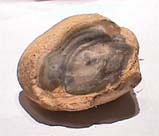A free gemology reference site
Gemology, gemstones, minerals and more
The Minerals
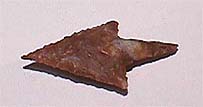 Flint
Flint
A real Indian arrowhead found by YourGemologist at the base of a rock at Queen's Peak, Montague County,Texas
Source: Limestone formations throughout North America and Europe
Chemical: SiO2 silicon oxide
Crystal System: None, organic in origin
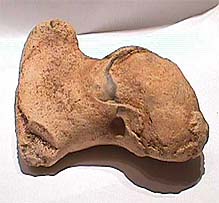 Formation: Flint is found as nodules in limestone formations formed from ancient sea beds. Flint is the result of ancient sea sponges being caught in the fossil bearing sea floor of ancient sea beds. While the surrounding sea floor is full of carbonaceous shell fossils, flint's high silicon content (due to the silicon content of the sea sponge) forms nodules where the sea sponge body was pressed into the flint that we find in these nodule formation today.
Formation: Flint is found as nodules in limestone formations formed from ancient sea beds. Flint is the result of ancient sea sponges being caught in the fossil bearing sea floor of ancient sea beds. While the surrounding sea floor is full of carbonaceous shell fossils, flint's high silicon content (due to the silicon content of the sea sponge) forms nodules where the sea sponge body was pressed into the flint that we find in these nodule formation today.
Unusual Properties: As seen above and below, flint has been used to make tools, spear points, and arrow heads for centuries. The arrow head shown above was taken personally from a 100 year old battle ground between the US Army and the Comanche Indians of North Texas. The place known as Queens Peak is located in Montague County, Texas. This arrow head was once on the tip of an arrow shot at a US Army soldier in the Texas Indian wars.
Shown at left is a nodule of flint as it occurs in the limestone. This nodule of flint was taken from a river bed in Mason County, Texas by Mark Imlay, GG, of San Antonio, Texas.
Inside view of flint nodule used to make arrow heads, spear points, and ancient tools
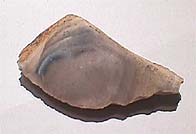
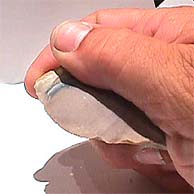 Flint cutting tool used to skin deer and game found by
Flint cutting tool used to skin deer and game found by
YourGemologist in a road cut outside of
Bandera, Texas. Notice the broken cutting edge, which
is most likely why the user discarded it for a new piece.
Notice the same cutting edge on the cutting tool and the
arrow head shown above........YourGemologist

